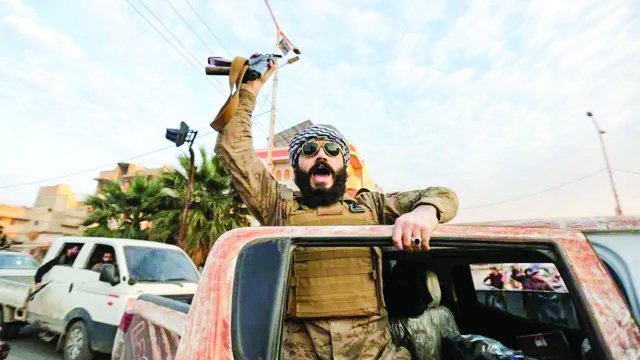A UK-based war monitor reports that the ‘local factions’ were able to take control of many military sites there following ‘violent battles’ with government forces.
Beirut: Rebel forces in southern Syria have reportedly captured most of the Deraa region – the birthplace of the 2011 uprising against President Bashar al-Assad.
A UK-based war monitor reports that the “local factions” were able to take control of many military sites there following “violent battles” with government forces.
Rebel sources say they had reached a deal for the army to withdraw and for military officials to be given safe passage to the capital, Damascus – roughly 100km (62 miles) away.
Meanwhile in the north, Syria’s military says it is carrying out air strikes around Homs, trying to push back rebels who’ve reached the edges of the strategic city.
Reports from a war monitor indicate Syrian forces have withdrawn to towns just 10km (6.2 miles) from Damascus, although this has been denied by the army and the BBC has been unable to verify it.
The Syrian Observatory for Human Rights (SOHR), a UK-based war monitor, said on Friday that the rebels in the south controlled more than 90% of the Deraa region and that only the Sanamayn area was still in government hands.
Deraa city has both strategic and symbolic importance. It is a provincial capital and is close to the main crossings on the Jordanian border, while also being where pro-democracy protests erupted in 2011 – sparking the country’s ongoing civil war, in which more than half a million people have been killed.
Jordan’s interior minister said the country had closed its side of the border as “a result of the surrounding security conditions in Syria’s south”. Along with the US and UK, Jordan has also urged its citizens to leave Syria as soon as possible.
Meanwhile, government officials in the city of Suweida – about 50km east of Deraa – are reported to have fled the city following clashes between security forces and militias from the minority Druze sect, which is predominant in the region.
Ryan Marouf, an activist and editor of news website Suwayda 24, told Reuters that “people are seeing what is happening in the rest of Syria as liberation of Syria and a chance to bring down the regime”.
Elsewhere, Kurdish-led forces say they have taken the city of Deir Ezzor, the government’s main foothold in the vast desert in east of the country.
And in the north, the main rebel offensive has reached the outskirts of the strategic city of Homs. The Syrian military and its Russian allies are fighting back, with air strikes killing 20 civilians in the city’s suburbs on Friday.
And crucially, officials quoted in the New York Times say President Assad’s other key ally, Iran, has begun to evacuate its military commanders and personnel.
It has been just over a week since rebels in the north launched their lightning offensive – the biggest against the Syrian government in years, which has exposed the weakness of the country’s military.
At least 370,000 people are thought to have been displaced so far as a result of the rebel offensive, according to the UN, which has said the fighting is also “worsening an already horrific situation for civilians in the north of the country”.
Some civilians are trapped in front-line areas unable to reach safer locations.
SOHR says more than 820 people, including 111 civilians, have been killed across the country since the Islamist-led rebels began their offensive last week.
They seized Hama, to the north of Homs, on Thursday – a second major blow to President Assad, who lost control of Aleppo last week.
The leader of the Islamist militant group Hayat Tahrir al-Sham (HTS), Abu Mohammed al-Jawlani, told residents of Homs “your time has come”.

